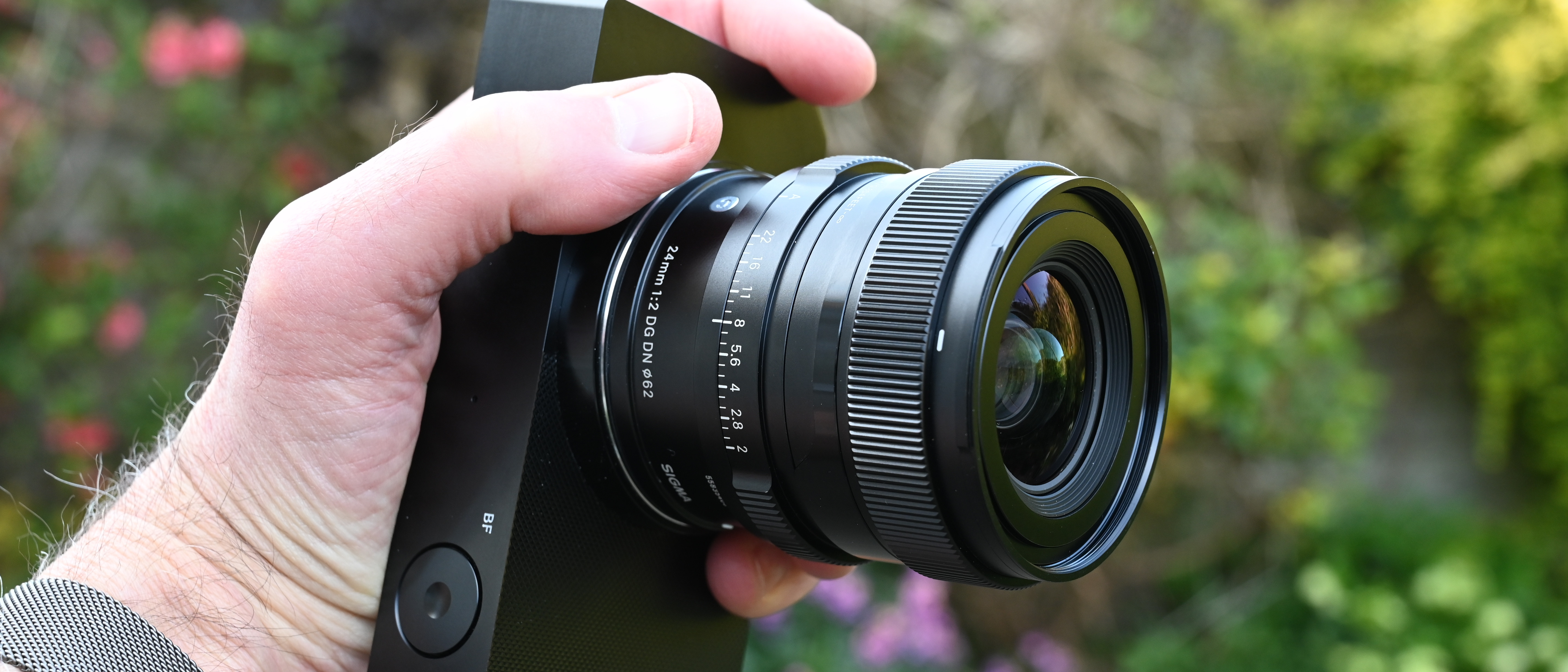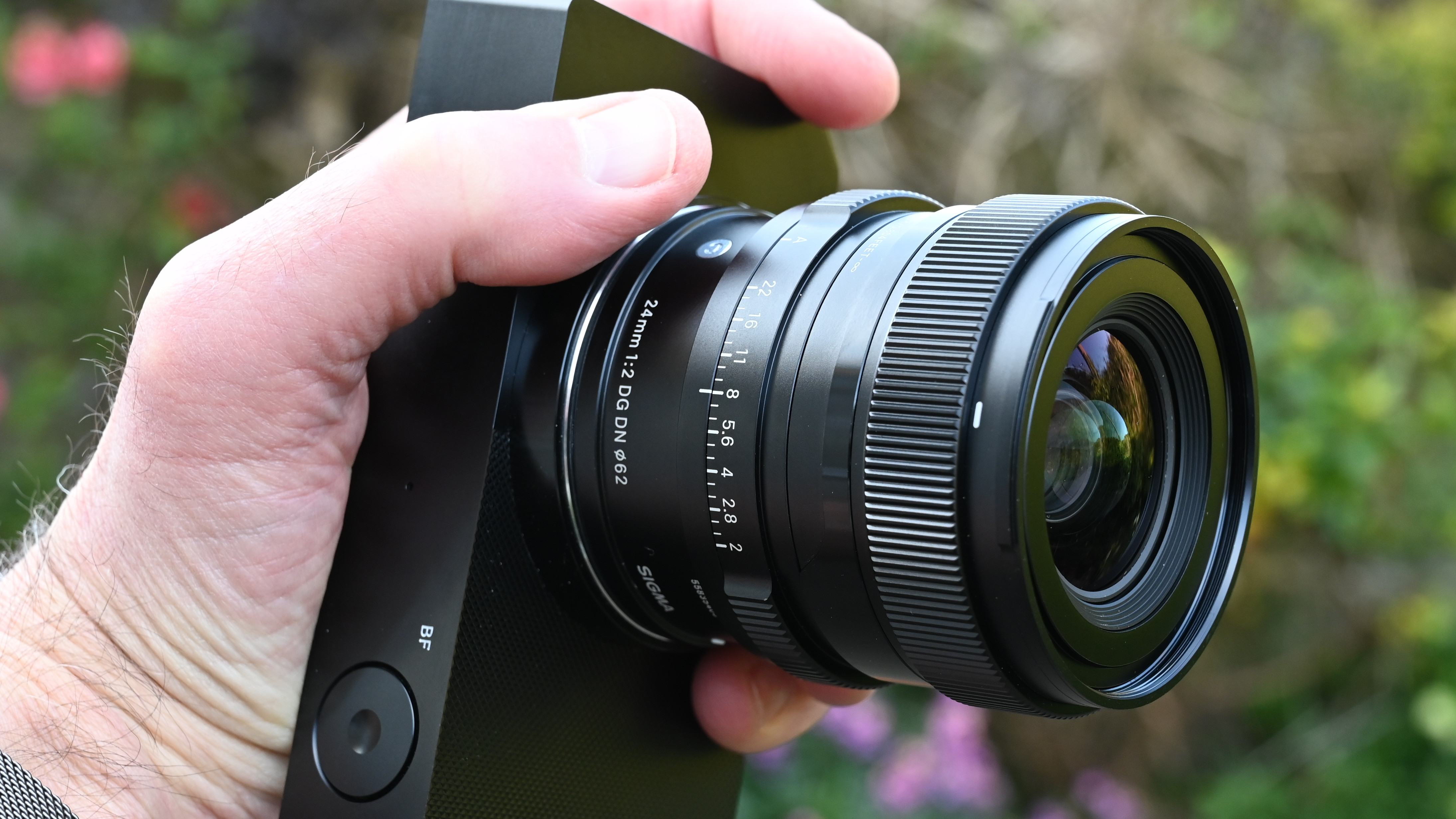
Sigma started rolling out its I-series prime lenses at the tail end of 2020. From the company’s Contemporary stable, they’re designed to be premium primes but with a compact and lightweight build. They also have a sturdy all-metal construction, that typically extends to the barrel, mounting plate and hood, while also coming with both plastic and magnetic metal front caps. As I write this review in the Spring of 2025, there are nine I-series lenses in total, which are currently getting a cosmetic refresh. The Sony E-mount versions are to get an updated black finish, while the Leica L-mount editions are to be made in silver as well as black. I’ve already been impressed when reviewing the 17mm F4 DG DN | C, 20mm F2 DG DN | C, 35mm F2 DG DN | C, 50mm F2 DG DN | C and 65mm F2 DG DN | C lenses in the range. I think they’re some of the best lenses for Sony and best L-mount lenses for full-frame mirrorless cameras on the market, in terms of price, performance and compactness. Let’s see how this 24mm prime stacks up against its siblings.
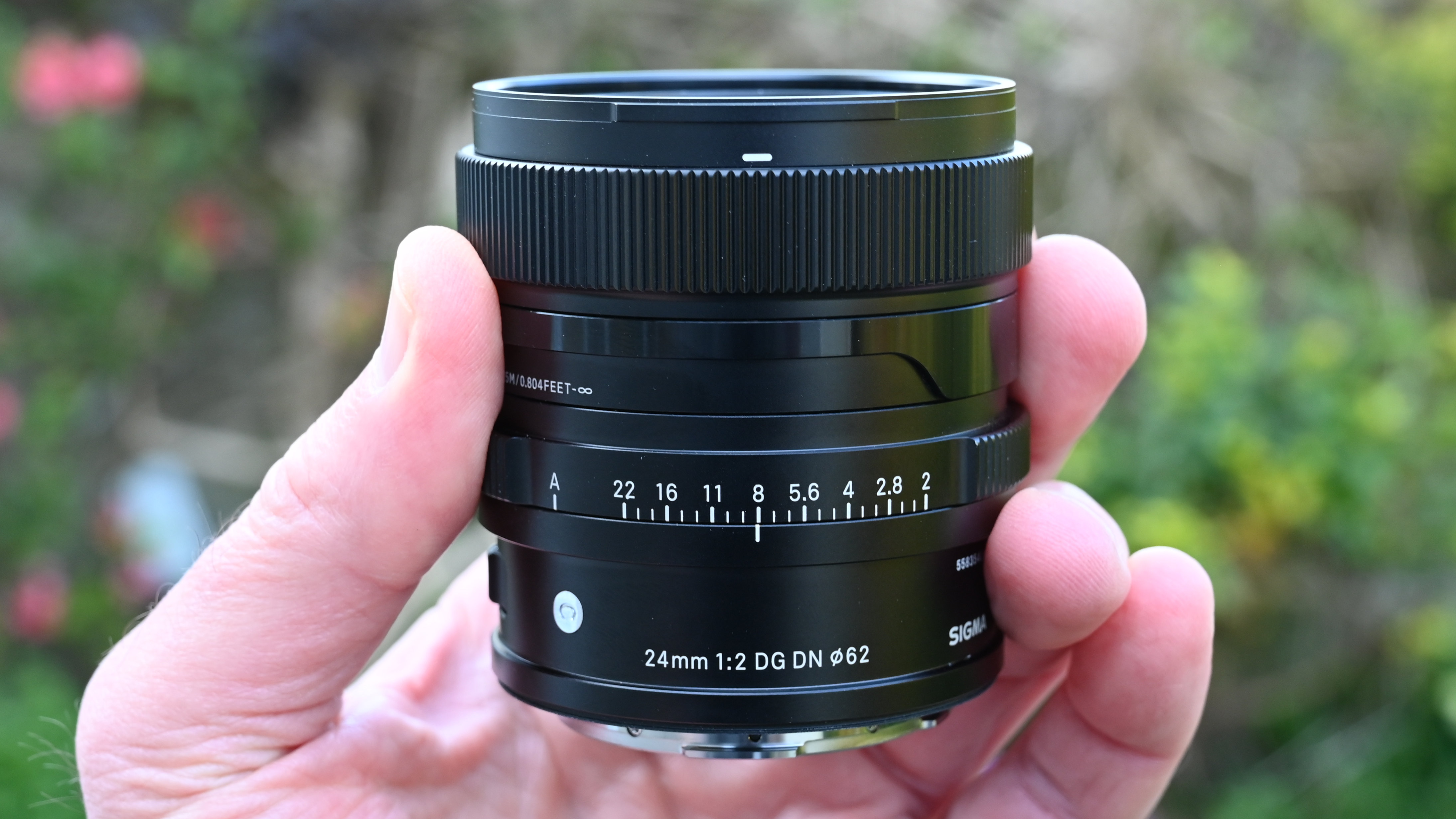
Sigma 24mm f/2 DG DN | C: Specifications
Sigma 24mm f/2 DG DN | C: Price
What price a high-quality prime lens? Sigma is one of the few photographic companies that still makes all of its lenses in Japan, rather than in various other Far-East countries, so they don’t come cheap. Even so, I think that the price tag of $639 / £509 / AU$900 for the 24mm f/2 DG DN | C is entirely reasonable and makes it good value for money. My only real complaint is that, as with other I-series lenses, it’s not available in a wider variety of mount options, instead of only being made for Sony E and Leica L-mount cameras.
Sigma 24mm f/2 DG DN | C: Design & Handling
Here’s a thing. As I said at the outset, 24mm is one of favorite focal lengths for shooting with full-frame cameras. I love it for landscapes, cityscapes and street photography. But here’s another thing. That focal length is covered by a 24-70mm standard zoom lens, so what’s the point of adding a prime? Well, first up, the 24mm prime is smaller and has a faster f/2 aperture for freezing motion and giving a tighter depth of field for close-ups (despite the short focal length). And there’s more. I seldom see the benefit of using a more compact, lightweight mirrorless camera rather than a conventional DSLR, if I have to hang a heavyweight lens off its front. There’s been a growing number of relatively small, lightweight standard primes for mirrorless cameras, including the Canon RF 28-70mm f/2.8 IS STM, Nikon Nikkor Z 28-75mm f/2.8, Sigma 28-70mm f/2.8 DG DN | C and Tamron 28-75mm f/2.8 Di III RXD G2. All of these offer a compact, lightweight and more inexpensive alternative to conventional ‘trinity’ f/2.8 standard zooms, but they also all only shrink to 28mm at the short end of their zoom range. That always leaves me wanting more, which is exactly where the Sigma steps in.
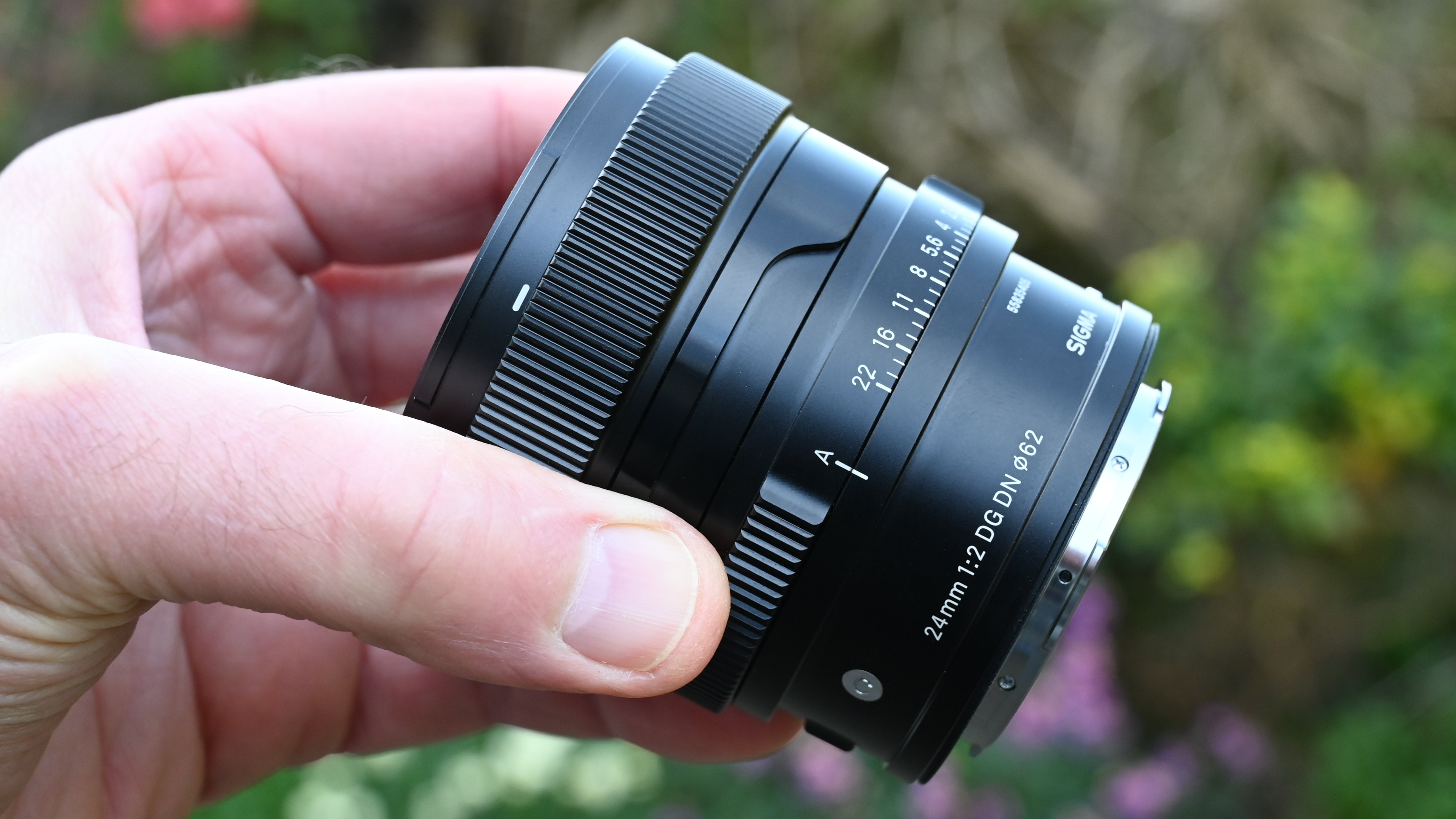
One of the things I like about all of the lenses I’ve reviewed so far in the Sigma I-series is that they’re a very similar size and weight. They also have virtually identical handling characteristics. That makes it very easy to chop and change between different lenses without noticing any real difference, physically at least.
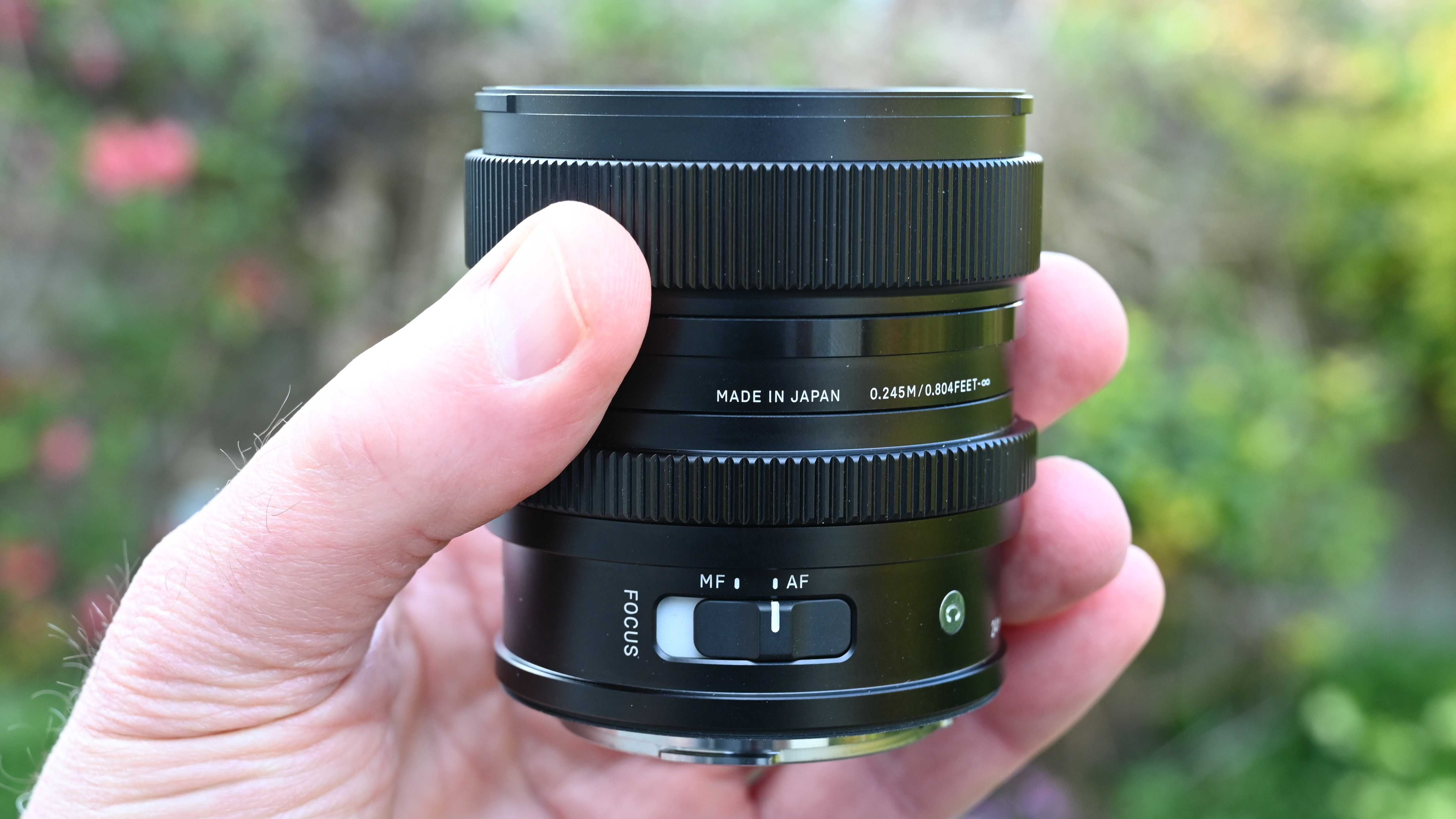
The 24mm weighs in at 365g (12.9oz) and measures 70x72mm (2.7x2.8"). It’s a bit large to slip into a spare pocket but certainly takes up very little room in a camera bag. The compact size also makes it nicely inconspicuous for street photography. Build quality feels reassuringly robust. As I’ve mentioned, it’s metal through and through. Starting at the back end, the mounting plate is made from coated brass and features a weather-seal gasket.
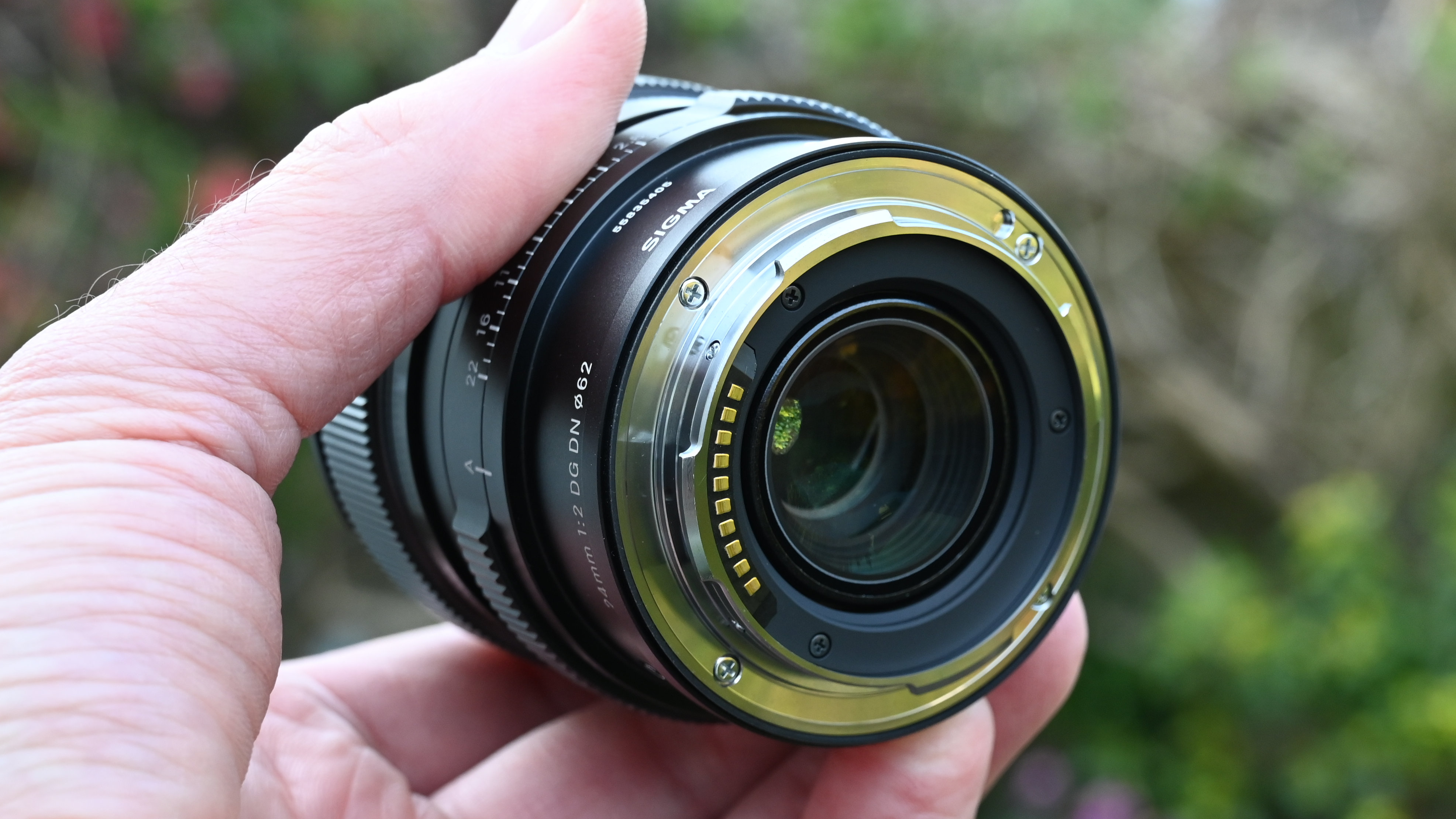
The barrel is made from precision-machined aluminum, as are the knurled focus ring, aperture ring and lens hood. And in addition to the regular plastic front cap, you also get a metal cap that secures to the lens with magnetic attraction.
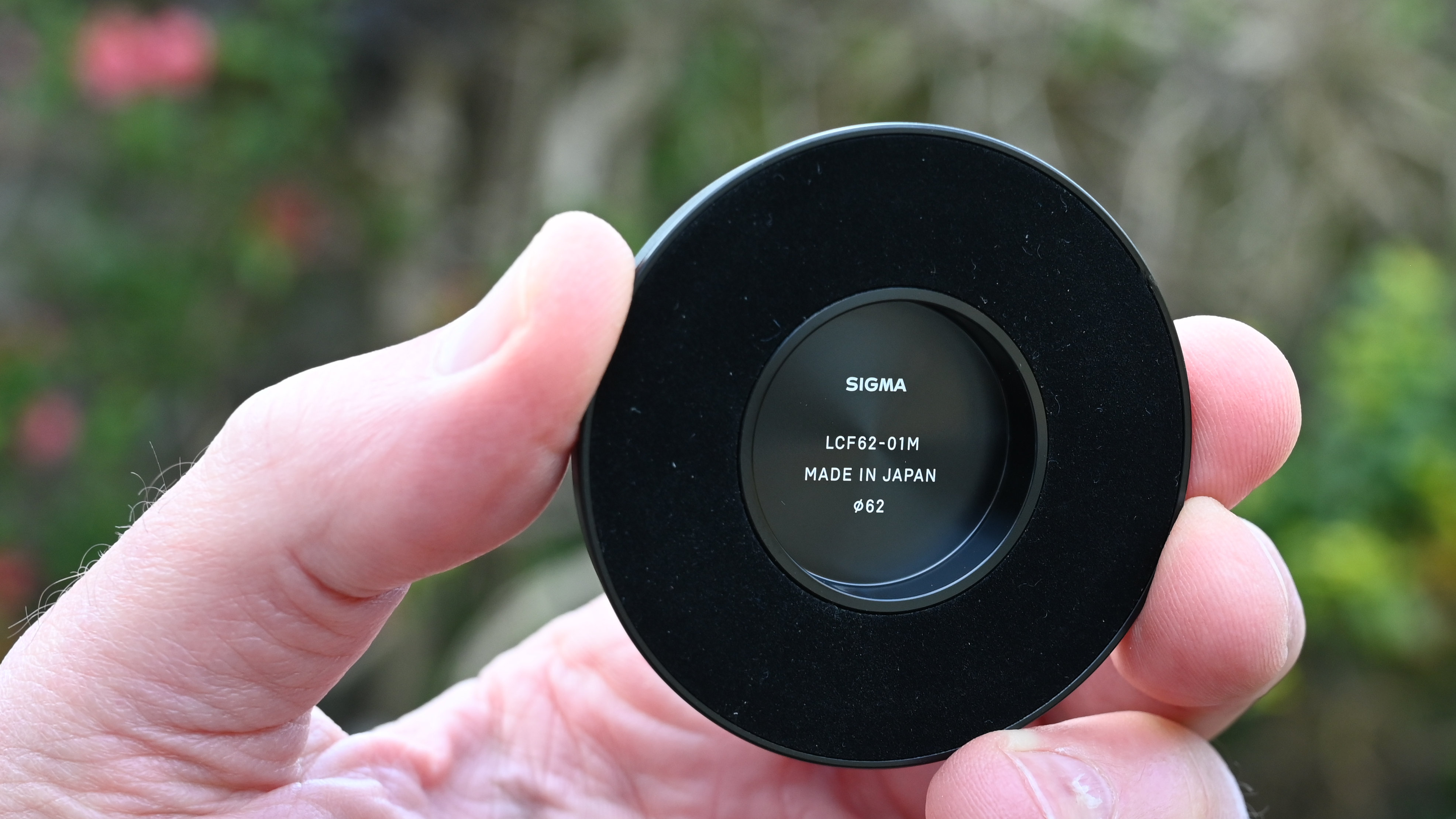
Getting back to the aperture ring, I like the inclusion but mostly for shooting video rather than stills. As with other I-series lenses, the one featured here has an ‘A’ position for camera-driven aperture control, and rotation in one-third f/stop click steps for the full range of apertures. I’d like to have seen a click/de-click switch for the aperture ring, as featured in some of Sigma’s other lenses, but that’s not featured in I-series lenses, which I feel misses a trick. To my mind, stepless aperture adjustment when shooting video is a key advantage of having a control ring.
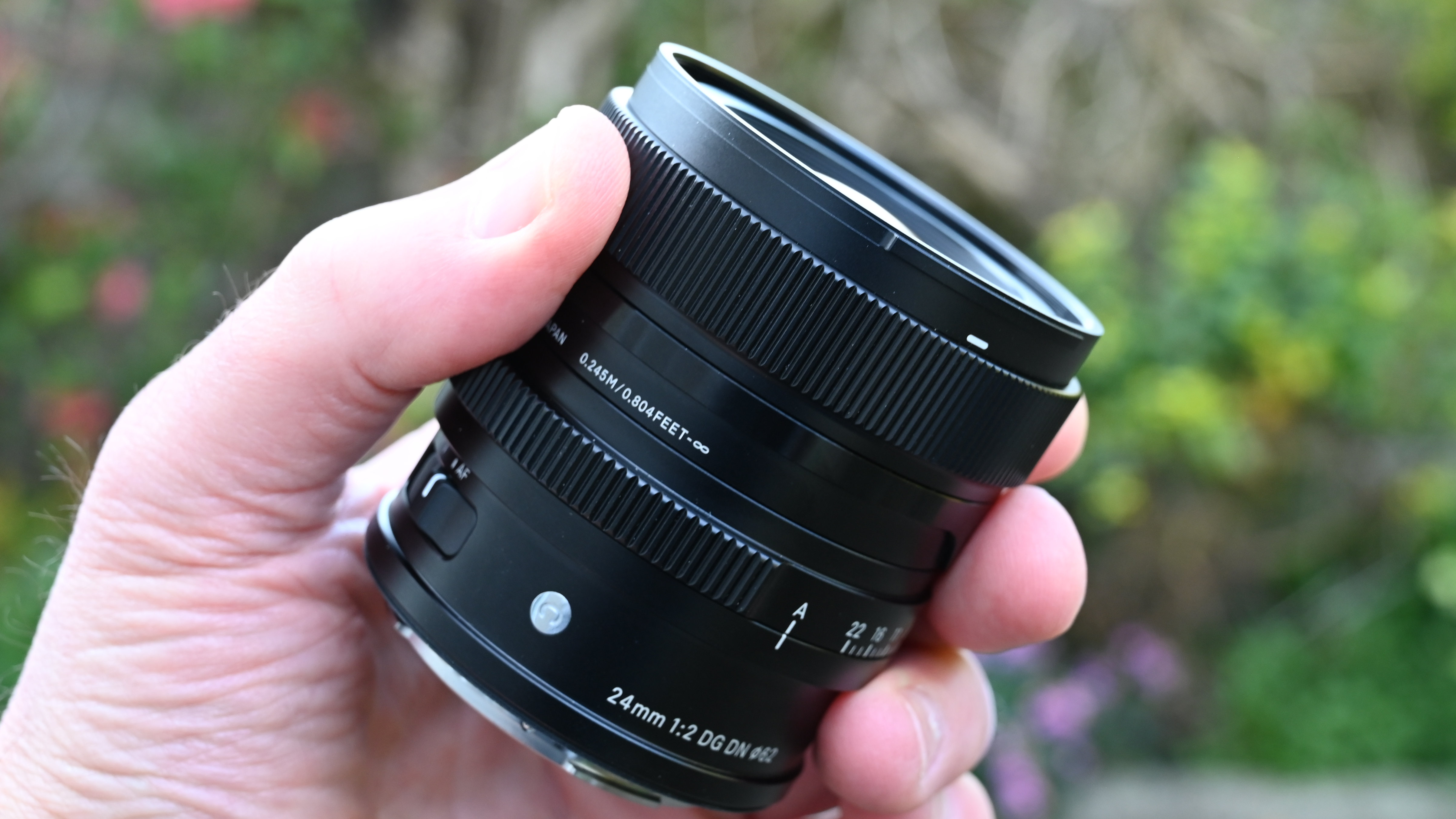
Despite its small size, the lens features 13 optical elements, arranged in 11 groups. These include two SLD (Special Low Dispersion) elements and one top-end FLD (Fluorite Low Dispersion) element, aiming to optimize sharpness and clarity while minimizing unwanted aberrations. Two aspherical elements are also featured, along with high-tech coatings to minimize ghosting and flare.
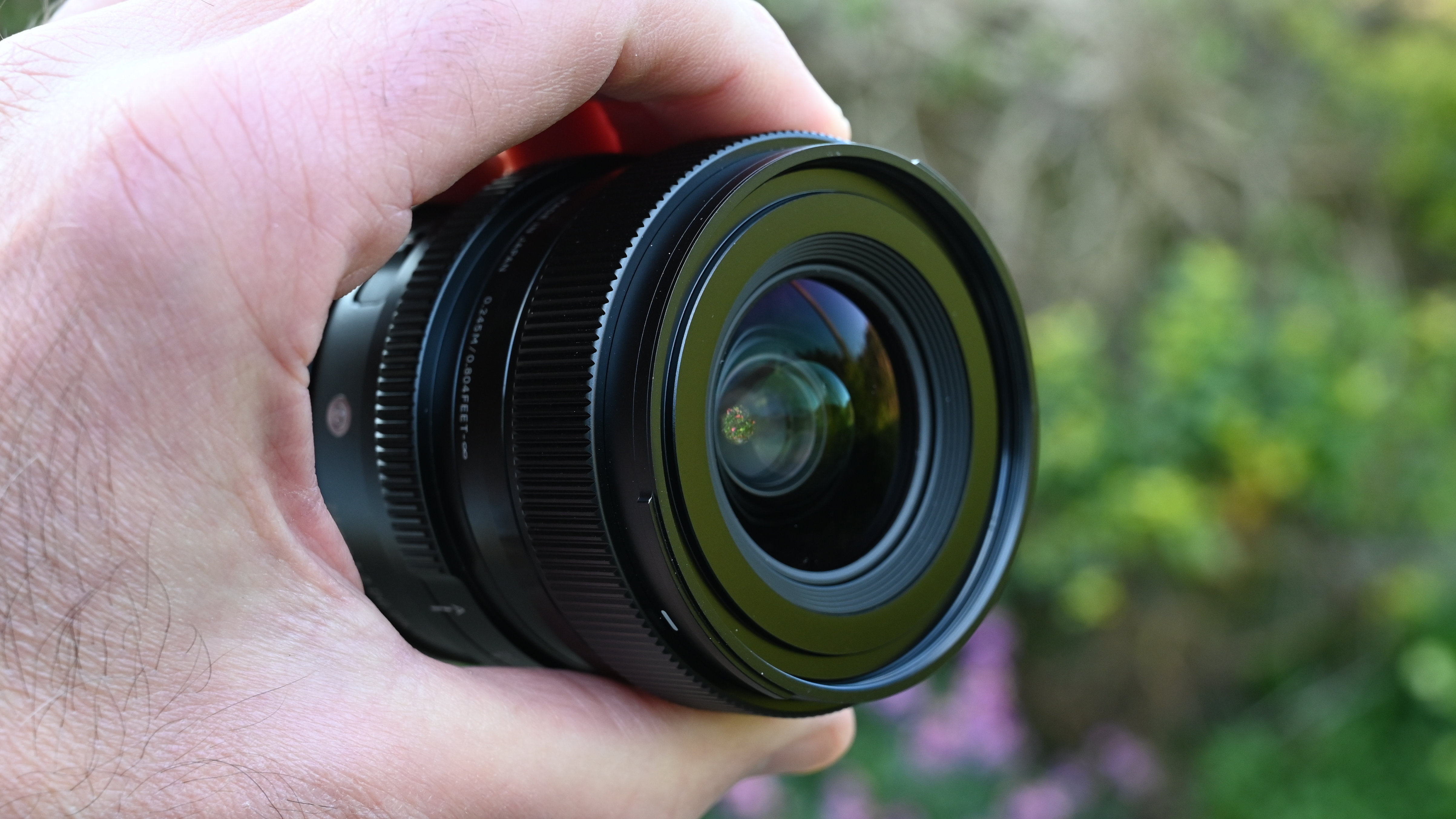
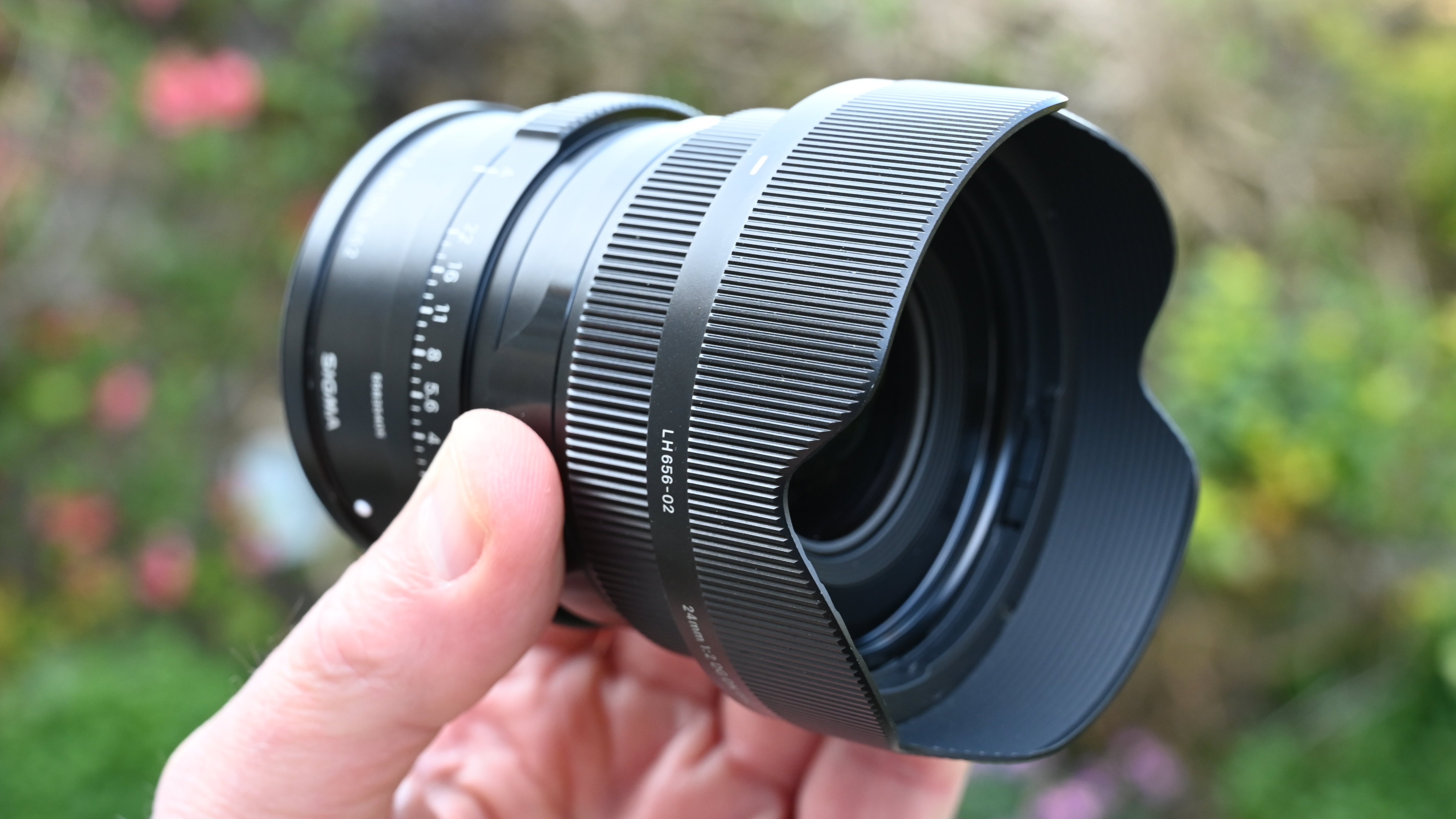
Sigma 24mm f/2 DG DN | C: Performance
I really like the retro look and feel of Sigma’s I-series lenses, and the 24mm is no exception. It’s beautifully crafted but, crucially, those good looks are backed up by excellent performance. I tested the L-mount version of the lens on the rather oddball Sigma BF full-frame body and it worked a treat. Sharpness and clarity are highly impressive, throughout the aperture range. Ghosting and flare are very well controlled and vignetting is minimal, even wide-open at f/2.

Every bit as important as sharpness, for me at least, is the quality of bokeh in a fast prime lens. After all, that’s one of the main attractions of a fast prime, compared with a slower zoom lens. A tight depth of field is a tall order for a lens with a fairly short 24mm focal length but the Sigma does well to give a dreamy quality to defocused areas within images when using wide apertures. That’s especially true for shooting close-ups, where the depth of field shrinks with focusing distance and helps to throw the background out of focus.

Sticking with close-ups and wide apertures for a moment, that’s when the accuracy of autofocus comes to the fore. Throughout my testing, I found that autofocus performance was fast, virtually silent and consistently accurate.
Sigma 24mm f/2 DG DN | C: Sample Images
The following gallery of example images was shot in the UK city of Bath. It includes expansive outdoor scenes taken in sunny conditions, as well as indoor shots of Bath Guildhall Market.
















Sigma 24mm f/2 DG DN | C: Lab Results
We run a range of lab tests under controlled conditions, using the Imatest Master testing suite. Photos of test charts are taken across the range of apertures and zooms (where available), then analyzed for sharpness, distortion and chromatic aberrations.
We use Imatest SFR (spatial frequency response) charts and analysis software to plot lens resolution at the center of the image frame, corners and mid-point distances, across the range of aperture settings and, with zoom lenses, at four different focal lengths. The tests also measure distortion and color fringing (chromatic aberration).
Sharpness:
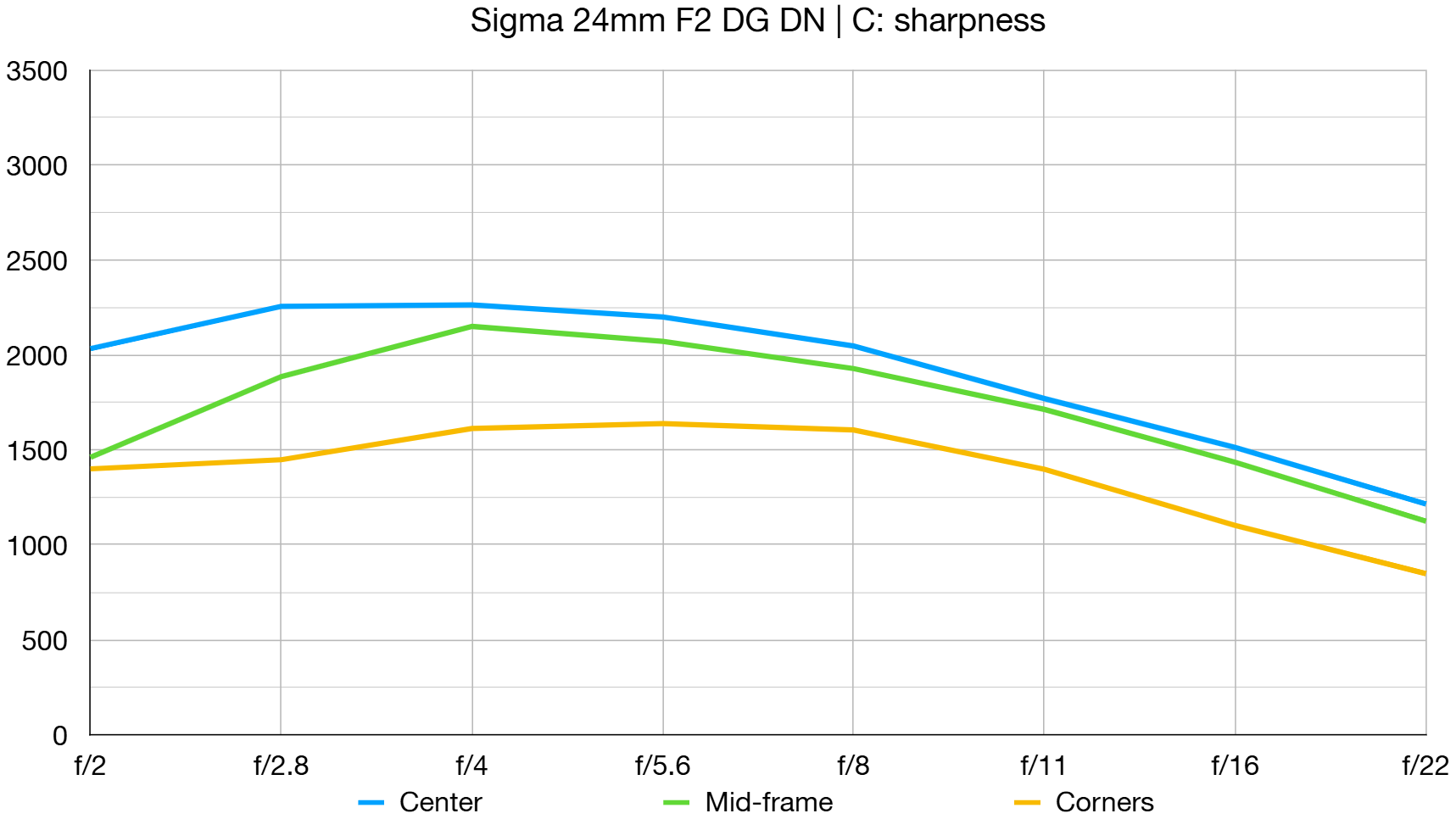
Levels of sharpness are impressive, even wide-open at f/2, right out to the edges and corners of the image frame. Things get even better in the aperture range between f/4 and f/8.
Fringing:
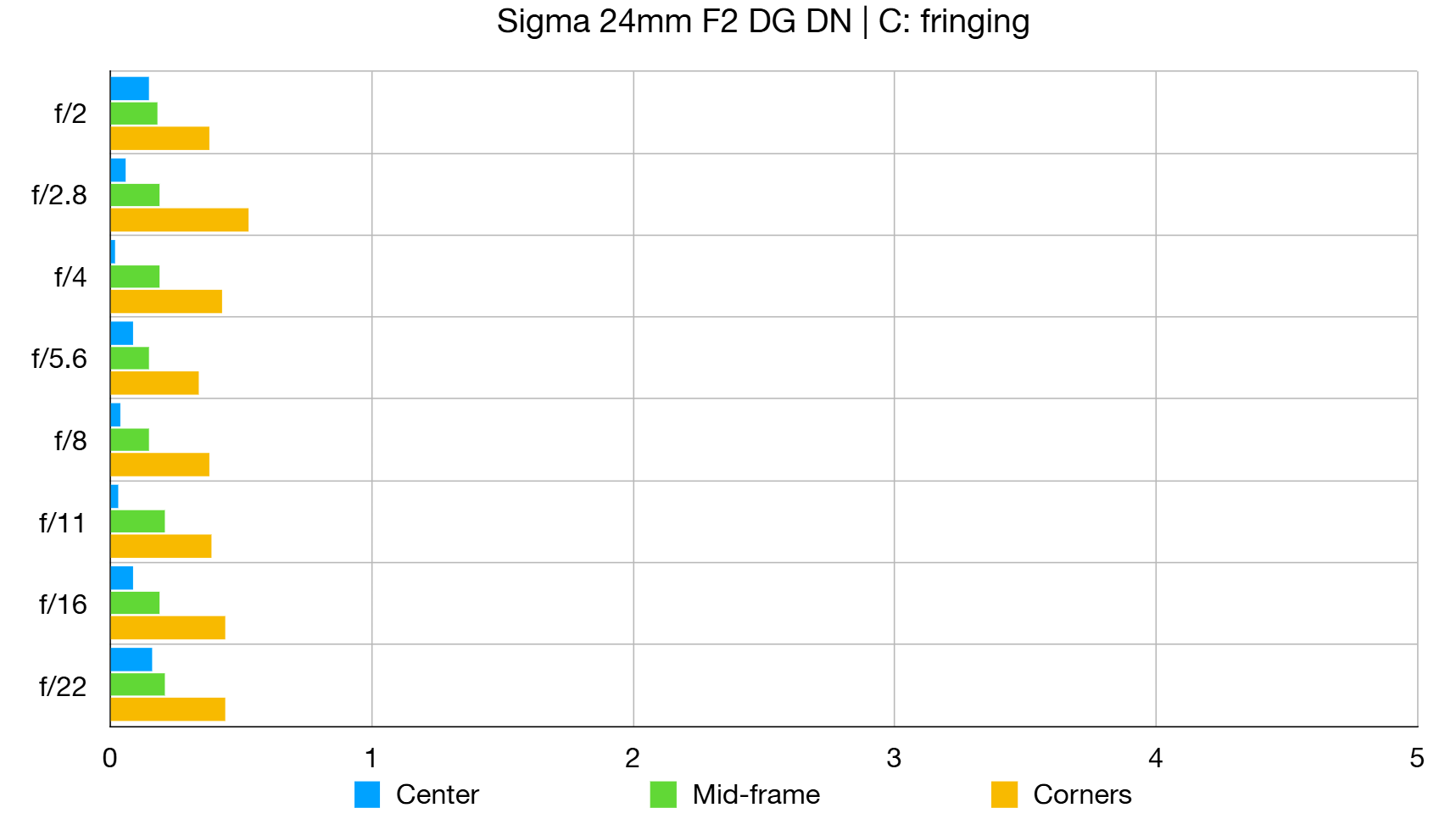
There’s only minimal color fringing, even at the edges and corners of the frame, which generally goes unnoticed in images.
Distortion: 0.3
There’s the slightest touch of pincushion distortion but it’s not noticeable in real-world images.
Sigma 24mm f/2 DG DN | C: Verdict
I really like all of the Sigma I-series prime lenses that I’ve seen, tested and reviewed. This is the sixth in the range so far, and is my pick of the crop. That’s really down to my love of the 24mm focal length, rather than this particular lens performing any better than its siblings. Either way, it has fast and consistently accurate autofocus and great handling that benefits from an aperture control ring and AF/MF focus mode switch. It’s all wrapped up in a beautiful retro design combined with all-metal toughness. Image quality combines superb sharpness and clarity with dreamy bokeh (at least for close-ups) and for all-round performance, the lens is as good as it looks. My only real negatives are that I wish it had a click/de-click switch for the aperture control ring, and that it was available in more mount options.
